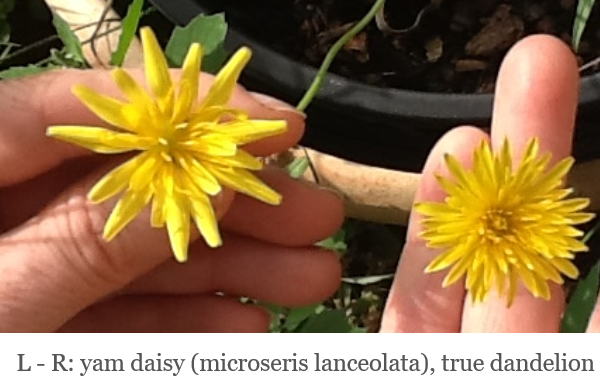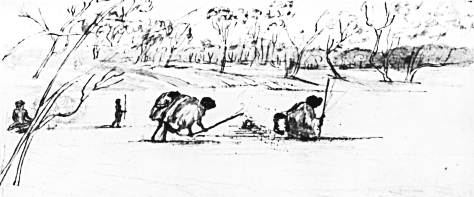a major food source for Indigenous Australians
Yam Daisy or Murnong was the only Australian plant recommended for development as a crop by the prominent 19th Century botanist Ferdinand von Mueller. Major Thomas Mitchell, in 1836, recorded that, east of the Grampians, the “vast extent of open downs” was “quite yellow with Murnong“, furthering the belief that it was a widespread, abundant species. One European settler described “millions of murnong over the plain”.
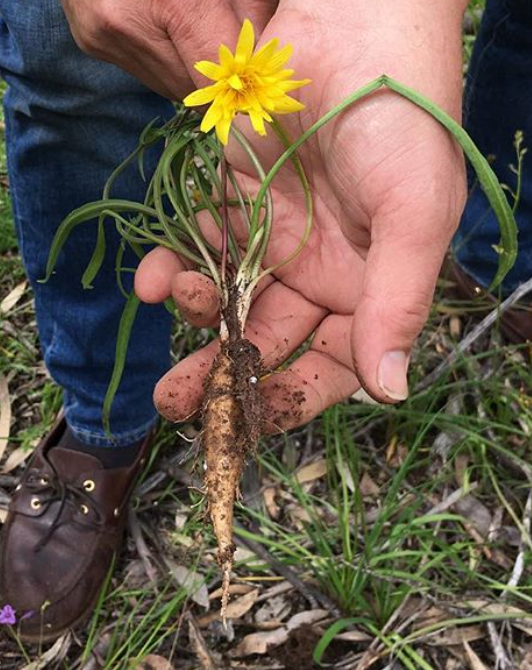
The small sweet tubers are produced each year in early spring, and harvested in summer (about November). Hundreds of women spread across the plains at harvest time, all digging for these nutritious roots. The digging sticks used by the women loosed the soil to provide good growth conditions for the smaller tubers, which they left in the soil.
The plants die back to their underground roots in March, and begin putting up new rosettes of fresh leaves in Autumn. The grasslands where the murnong grew were burned off during this dormancy period. The burning was controlled with some patches burned each year. The whole growing area was burned every 3 years. This controlled the growth of larger plants, which would otherwise have shaded out this valuable food crop.
The buds droop until the flowers open. The flowers open and stay upright for one day to attract pollinating insects.
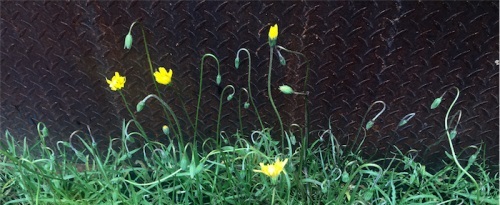
They droop again as the seeds form. When the seeds are ripe, the stems elongate and straighten, holding the seeds up to the wind, for distribution.
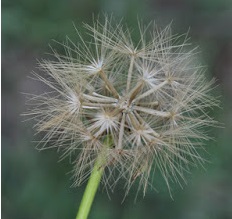
The flower is a yellow head of florets, reminiscent of a dandelion.
